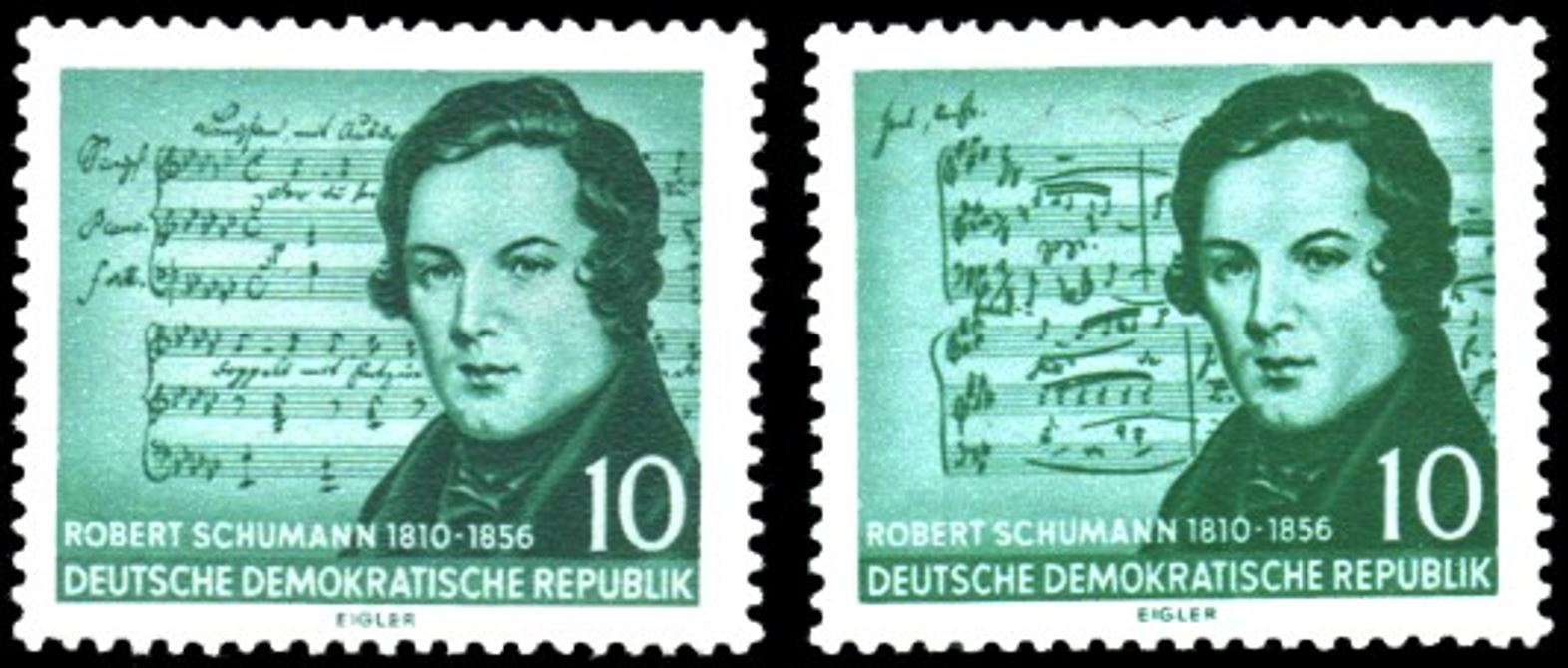Musical Sources on Postage Stamps
Thursday, December 8, 2022

Photocopies, microfilms, facsimiles, and digital scans: There are many ways to get your hands on copies of original sources for your desk at home. But when we think of reproductions of musical works, postage stamps don’t always come to mind. Let’s take a look at two German examples.
The German Postal Service issued a remarkable stamp to commemorate the 350th anniversary of Claudio Monteverdi’s death. For the design, two works were chosen to accompany a portrait of the composer. To the left of him is the Eighth Book of Madrigals from 1638 (RISM ID no. 990042097 RISM Catalog | RISM Online). Interestingly, they used the title page of the basso continuo, which is the only one of the partbooks that has a decorative frame. However, the image was retouched and the name of the partbook was removed (indicated by the red frame in our image). Orfeo is to the right of Monteverdi and there is an important detail that points to the exact edition even though parts of the title are obscured. Evidently the first edition from 1609 (RISM ID no. 990042046 RISM Catalog | RISM Online) was used, because the dedication to Francesco Gonzaga is missing from the 1615 edition.
Of course, music manuscripts are also depicted on stamps. The following example shows how this does not always go smoothly: they struck a wrong chord in East Germany in 1956 when Franz Schubert’s “Wandrers Nachtlied” (RISM ID no. 464000227, autograph manuscript in D-B RISM Catalog | RISM Online) was depicted alongside an image of Robert Schumann for the latter’s centennial of death. This makes it all the more interesting for stamp collectors. Some people must have noticed, and the stamp was reissued shortly after with Schumann’s “Mondnacht.” The beginning of the piece was taken from the autograph working manuscript in his Liederbuch, which you can view online (RISM ID no. 464000024 RISM Catalog | RISM Online). The autograph fair copy (RISM ID no. 464000043 RISM Catalog | RISM Online) arrived on deposit at the Staatsbibliothek in Berlin only in 1984, so it wasn’t available to the stamp creators.

There are many more examples that could be given. You can find out more about music in stamps in Gerhard K. Megla’s Musik im Spiegel der Philatelie (Tübingen: Wasmuth, 1984) and on Twitter from Musical Stamps.
Images courtesy of Martin Bierwisch.
Share Tweet EmailCategory: New at RISM

